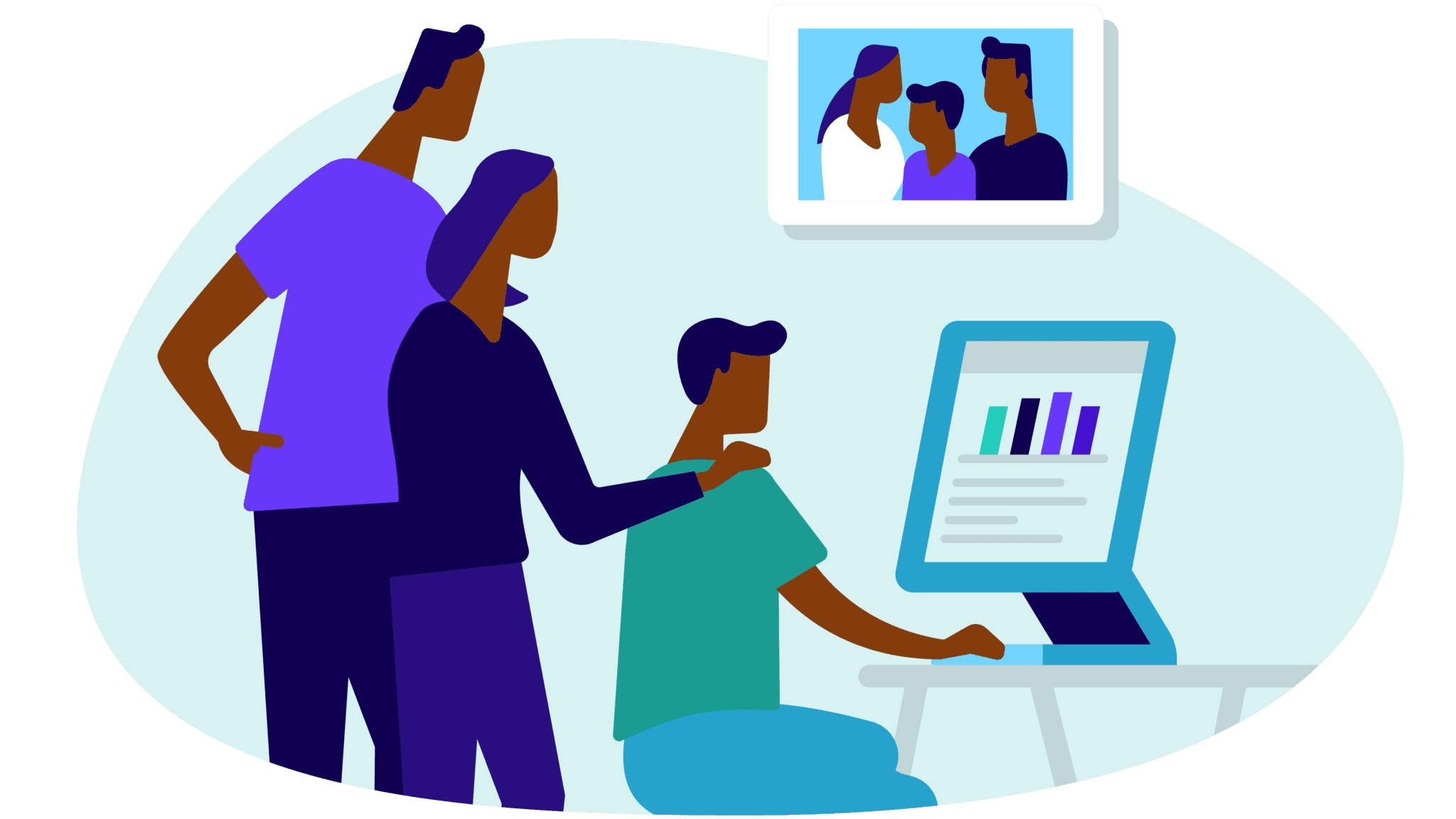Making Data Publicly Available
People need information to make informed decisions.
By ensuring that everyone has access to high-quality, relevant data, leaders empower individuals and demonstrate their commitment to transparency.

Data Transparency Enables Decisionmaking
Individuals face many decision points on their education and workforce journeys. They need information to answer crucial questions like:
- How many students in my high school earn early college credits?
- Which colleges in my state produce the most graduates in my chosen field?
- What starting salary can I expect to earn with this credential?
With access to aggregate data as well as their own information, individuals can explore the opportunities available to them and see outcomes for students like them. Timely and transparent education and workforce data helps individuals, families, and the community learn about the schools and institutions in their area and make informed decisions along their own path to success. Leaders must prioritize ensuring that data is easy to find and use so that individuals and their families can make the best decisions for their futures.
Leaders Must Make Data Accessible
Annual report cards are one of the main ways states and districts share education data with the public. These resources include key information on student outcomes and school quality, which people rely on in order to learn about their local school systems and make informed decisions for themselves and their families. Leaders must prioritize report cards as a critical tool for communicating with the communities they serve.
Report cards and other public-facing data resources are most effective when they go above and beyond federal requirements and include data that answers people’s essential questions. Student growth measures, for example, use performance data from multiple years to capture individuals’ progress over time. Sharing growth data on report cards provides families and community members with a more comprehensive and equitable picture of how schools are supporting student learning. It is equally important that leaders share data on students’ outcomes after high school, such as college enrollment and persistence, and workforce readiness.
Leaders must also take steps to ensure this information is meaningful to all individuals, families, and community members. All data points should be disaggregated by student groups wherever possible, in order to shed light on how systems are serving different groups of people. Data should also be easy for people to find and understand, which includes providing high-quality translations. States and districts can also take additional steps to help people understand data by using clear language, including helpful visualizations, and making their report cards easy to navigate. When leaders ensure that everyone has the information they need, they demonstrate their commitment to equity and build public trust.
Making Data Publicly Available in Practice
Here are a few ways that leaders are connecting individuals with the data they need.
Disaggregating data (or breaking it down by student group)
In 2021, all 50 states and the District of Columbia included high school graduation data on their annual report cards; 32 reported graduation rates for each federally required student group. Disaggregating data sheds light on opportunity gaps and allows states to measure progress toward equity goals.
Providing students and families with information to explore their postsecondary options
The U.S. Department of Education’s College Scorecard allows users to view data on student outcomes by institution or field of study, as well as access tools to help them plan for their own postsecondary pathways. Publicly sharing this information provides students and families with the data they need to explore their postsecondary options.
Sharing timely, relevant, and high-quality data
During the 2020–21 school year, North Dakota introduced a COVID-19 response webpage where families could see how many students in their school or district were enrolled in in-person, hybrid, or remote instruction—all disaggregated and updated weekly. By providing this level of detail, state leaders gave families some measure of clarity in the midst of deep uncertainty, which maintains transparency and protects public trust.
Translating report cards and other key resources into languages other than English
Delaware’s report card is a good example of effective translation: it is high quality, works on all text and labels, and includes language options that reflect the state population.
Publishing data on students’ long-term education and workforce outcomes
Thirty-seven states included postsecondary enrollment data on their 2021 report cards, but far fewer shared how many enrolled in two-year institutions (14 states), enlisted in the military (5 states), or joined the workforce out of high school (5 states). Mississippi’s report card, for example, includes a wide range of postsecondary outcomes that show how soon students enroll in postsecondary education after graduating high school, where students enroll, how well they are doing academically, and their career fields. Including this information on report cards and other public reports empowers individuals and families to make informed decisions and plan for the future.
Featured Resources
More on Making Data Publicly Available
Data 101
Data is one of the most powerful tools to inform, engage, and create opportunities for individuals along their journey through education and into the workforce—and it‘s much more than test scores.
About Us
We advocate to change the role of data to ensure that data works for everyone navigating their education and workforce journeys.

